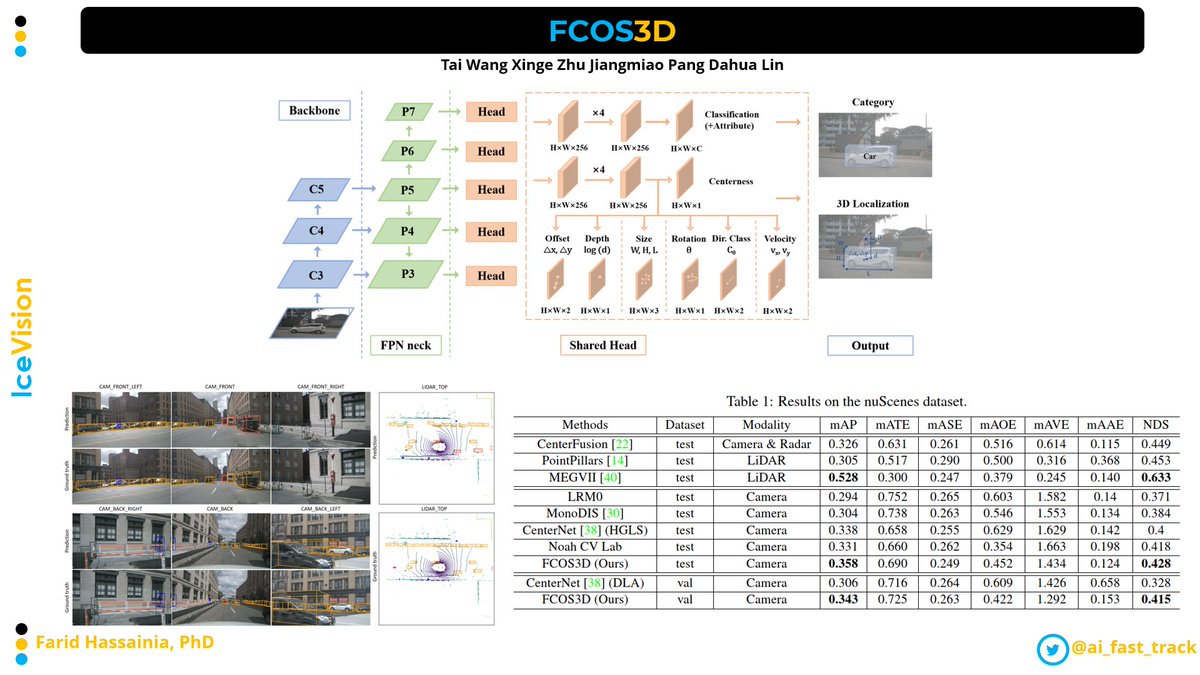
❇VFNet: A very interesting model that isn’t under the radar. You should give it a try :)
VariFocalNet: An IoU-aware Dense Object Detector
🧊 Background:
📌 Accurately ranking candidate detections is crucial for dense object detectors to achieve high performance
...
VariFocalNet: An IoU-aware Dense Object Detector
🧊 Background:
📌 Accurately ranking candidate detections is crucial for dense object detectors to achieve high performance
...

📌 Prior work uses the classification score or a combination of classification and predicted localization scores (centerness) to rank candidates.
📌 Those 2 scores are still not optimal
🧊 Novelty:
📌 VFNet proposes to learn an IoU-Aware Classification Score (IACS)
📌 Those 2 scores are still not optimal
🧊 Novelty:
📌 VFNet proposes to learn an IoU-Aware Classification Score (IACS)
📌IACS is used as a joint representation of object presence confidence and localization accuracy using IoU
📌 VFNet introduces the VariFocal Loss
📌 The VariFocal Loss down-weights only negative examples for addressing the class imbalance problem during training
📌 VFNet introduces the VariFocal Loss
📌 The VariFocal Loss down-weights only negative examples for addressing the class imbalance problem during training
📌 The VariFocal Loss up-weights high-quality positive examples for generating prime detections
🧊 VFNet Architecture:
📌 VFNet is based on the FCOS+ATSS with the centerness branch removed
📌 It has three new components:
✨ The VariFocal Loss,
✨ The star-shaped bounding box feature representation
✨ The bounding box refinement
📌 VFNet is based on the FCOS+ATSS with the centerness branch removed
📌 It has three new components:
✨ The VariFocal Loss,
✨ The star-shaped bounding box feature representation
✨ The bounding box refinement
📌 VFNet also uses GIoU Loss for both bounding boxes branches
📌 VariFocal Loss consistently improved RetinaNet, FoveaBox and ATSS by 0.9 AP, and by 1.4 AP for RepPoints
🎁 IceVision fully supports the VFNet model!
- IceVision Repo: github.com/airctic/IceVis…
📌 VariFocal Loss consistently improved RetinaNet, FoveaBox and ATSS by 0.9 AP, and by 1.4 AP for RepPoints
🎁 IceVision fully supports the VFNet model!
- IceVision Repo: github.com/airctic/IceVis…
🟦If this was helpful, feel free to follow @ai_fast_track for more OD / CV demystified content in your feed
🟧 If you could give the thread a quick retweet, it would help others discover this content. Thanks!
🟧 If you could give the thread a quick retweet, it would help others discover this content. Thanks!
https://twitter.com/ai_fast_track/status/1461042489545134089
• • •
Missing some Tweet in this thread? You can try to
force a refresh








